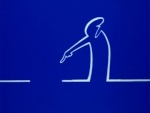Virus

- Posts : 28265
Join date : 2015-03-20
- Post n°376
 Re: Virus
Re: Virus
ko nije primio pričest da požuri, hram je otvoren (barem bio oko 10), ulaz iz katanićeve. glavna vrata zamandaljena.
_____
#FreeFacu
Дакле, волео бих да се ЈСД Партизан угаси, али не и да сви (или било који) гробар умре.

- Posts : 41649
Join date : 2012-02-12
Location : wife privilege
- Post n°378
 Re: Virus
Re: Virus
Talason wrote:btw ovo sa lokacijom laboratorija je kao onaj vic kad muja farba put
prvi dan ofarba 2km, drugi 500m, a treći 100m
zove ga šef i kao taman sam hteo da te pohvalim, a ti sve manje svaki dan
pa šefe, znaš kako mi je bila daleko kanta trećeg dana
Морао сам да проверим да ли си преписао, ал' јок, добар преприч.
_____
electric pencil sharpener is useless, electric pencils don't need to be sharpened at all
И кажем себи у сну, еј бре коњу па ти ни немаш озвучење, имаш оне две кутијице око монитора, видећеш кад се пробудиш...

- Posts : 4836
Join date : 2016-06-09
Location : gotta have those beans
- Post n°379
 Re: Virus
Re: Virus
Cowboy wrote:Aman, čovek jesportistabahata utilitaristička debilčina
FTFY

- Posts : 3470
Join date : 2014-10-29
- Post n°380
 Re: Virus
Re: Virus
upravo se i eksperimentise sa tim zato sto se hiljadama godina dogadja u prirodi (a zna se kakva je situacija u tom regionu po pitanju hendlovanja zivotinja).MNE wrote:kako se to prirodno desilo baš godinu nakon što su počeli da eksperimentišu sa tim, nakon toliko hiljada godina postojanja u prirodi
meni je bas fascinantna ova opsednutost idejom da je ovo nekakav toliko nezamisliv dogadjaj da nema sanse da je prirodan

pokazuje totalno nepoznavanje toga u kakvoj laboratoriji zivimo (i ponasamo se kao da nad istom imamo potpunu kontrolu).
uvek pitam, ok, iz kog laba je pobegao spanski grip.
_____
you cannot simply trust a language model when it tells you how it feels

- Posts : 7775
Join date : 2017-03-14
- Post n°381
 Re: Virus
Re: Virus
pa može da bude isto prirodan a da se neko od laboranata tamo zarazio, mislim potpuno je nebitno jel prirodan ili je iz laboratorije ili sa pijace, upozoravani su ranije i za jedno i za drugo, nisu odustali desilo se odgovorni su i ćao
ali i zapadnjaci su krivi ( i to ne malo), da se ovo dešavalo prije par decenija dok još nisu prebacili kapital i pogone u Kinu da vidiš kako bi bilo oštrijih reagovanja, ovako su ćutali da ne talasaju bikoz kapital mora da se obrće
ali i zapadnjaci su krivi ( i to ne malo), da se ovo dešavalo prije par decenija dok još nisu prebacili kapital i pogone u Kinu da vidiš kako bi bilo oštrijih reagovanja, ovako su ćutali da ne talasaju bikoz kapital mora da se obrće

- Posts : 52544
Join date : 2017-11-16
- Post n°383
 Re: Virus
Re: Virus
Falsifikuju ovi Danci, Norvezani i Finci, koriste one kratke, nesigurne testove.

- Posts : 11343
Join date : 2014-10-28
- Post n°384
 Re: Virus
Re: Virus
u hrvatskoj danas svega 10 novozaraženih
_____
most of us probably not getting better
but not getting better together

- Guest
- Post n°385
 Re: Virus
Re: Virus
Lažu ujke, imaju nepouzdane testove 
E bre ovi sve živo i mrtvo sutra otvaraju
https://www.blic.rs/vesti/drustvo/nove-mere-vlade-penzioneri-u-setnji-od-1800-do-100-otvaraju-se-i-pijace-evo-ko-ce-od/d46g9zt

E bre ovi sve živo i mrtvo sutra otvaraju
https://www.blic.rs/vesti/drustvo/nove-mere-vlade-penzioneri-u-setnji-od-1800-do-100-otvaraju-se-i-pijace-evo-ko-ce-od/d46g9zt

- Posts : 7894
Join date : 2019-06-06
- Post n°386
 Re: Virus
Re: Virus
kako ce da rokne drugi talas tipa kraj maja, jun i onda ce da kazu da se ne zajebavamo opet sa polovicnim merama, nego ajde 14 dana kuci.
_____
????

- Posts : 82756
Join date : 2012-06-10
- Post n°387
 Re: Virus
Re: Virus
Meni se čini da je od ovih stvari koje navodno tek sad otvaraju, radilo sve osim pijaca. Knjižare rade, automehaničri rade, građevina već da ne pominjem, oni nistu stali ni u jednom trenutku. Istina, nisam skoro ulazio u prodavnice sa nautikom, pa za njih ne znam...
_____
"Oni kroz mene gledaju u vas! Oni kroz njega gledaju u vas! Oni kroz vas gledaju u mene... i u sve nas."
Dragoslav Bokan, Novi putevi oftalmologije

- Posts : 11141
Join date : 2014-10-28
Age : 45
- Post n°389
 Re: Virus
Re: Virus
pa zato sto doslovno prepisuju ko u srednjoj skoli nordijske zemlje
_____
radikalni patrijarhalni feminista
smrk kod dijane hrk

- Posts : 35785
Join date : 2012-02-10
- Post n°390
 Re: Virus
Re: Virus
Erős Pista wrote:Meni se čini da je od ovih stvari koje navodno tek sad otvaraju, radilo sve osim pijaca.
Eto vidis kako se ispunjava data rec

_____
★
Uprava napolje!

- Guest
- Post n°391
 Re: Virus
Re: Virus
tekst je od pre tri dana pa je verovatno kačen. ako jeste, izvinjavam se. ako nije, pročitajte. meni je ovo vrlo otrežnjujuće. mi smo takoreći slepci u ranoj fazi raspipavanja slona.
How does Coronavirus kill?
Kidneys
Brain
GI Tract
How does Coronavirus kill?
On rounds in a 20-bed intensive care unit (ICU) one recent day, physician Joshua Denson assessed two patients with seizures, many with respiratory failure and others whose kidneys were on a dangerous downhill slide. Days earlier, his rounds had been interrupted as his team tried, and failed, to resuscitate a young woman whose heart had stopped. All shared one thing, says Denson, a pulmonary and critical care physician at the Tulane University School of Medicine. “They are all COVID positive.”
“[The disease] can attack almost anything in the body with devastating consequences,” says cardiologist Harlan Krumholz of Yale University and Yale-New Haven Hospital, who is leading multiple efforts to gather clinical data on COVID-19. “Its ferocity is breathtaking and humbling.”
Understanding the rampage could help the doctors on the front lines treat the fraction of infected people who become desperately and sometimes mysteriously ill. Does a dangerous, newly observed tendency to blood clotting transform some mild cases into life-threatening emergencies? Is an overzealous immune response behind the worst cases, suggesting treatment with immune-suppressing drugs could help? What explains the startlingly low blood oxygen that some physicians are reporting in patients who nonetheless are not gasping for breath? “Taking a systems approach may be beneficial as we start thinking about therapies,” says Nilam Mangalmurti, a pulmonary intensivist at the Hospital of the University of Pennsylvania (HUP).
What follows is a snapshot of the fast-evolving understanding of how the virus attacks cells around the body, especially in the roughly 5% of patients who become critically ill. Despite the more than 1000 papers now spilling into journals and onto preprint servers every week, a clear picture is elusive, as the virus acts like no microbe humanity has ever seen
When an infected person expels virus-laden droplets and someone else inhales them, the novel coronavirus, called SARS-CoV-2, enters the nose and throat. It finds a welcome home in the lining of the nose, according to a preprint from scientists at the Wellcome Sanger Institute and elsewhere. They found that cells there are rich in a cell-surface receptor called angiotensin-converting enzyme 2 (ACE2). Throughout the body, the presence of ACE2, which normally helps regulate blood pressure, marks tissues vulnerable to infection, because the virus requires that receptor to enter a cell. Once inside, the virus hijacks the cell’s machinery, making myriad copies of itself and invading new cells.
HeartIf the immune system doesn’t beat back SARS-CoV-2 during this initial phase, the virus then marches down the windpipe to attack the lungs, where it can turn deadly. The thinner, distant branches of the lung’s respiratory tree end in tiny air sacs called alveoli, each lined by a single layer of cells that are also rich in ACE2 receptors.
Normally, oxygen crosses the alveoli into the capillaries, tiny blood vessels that lie beside the air sacs; the oxygen is then carried to the rest of the body. But as the immune system wars with the invader, the battle itself disrupts this healthy oxygen transfer. Front-line white blood cells release inflammatory molecules called chemokines, which in turn summon more immune cells that target and kill virus-infected cells, leaving a stew of fluid and dead cells—pus—behind. This is the underlying pathology of pneumonia, with its corresponding symptoms: coughing; fever; and rapid, shallow respiration. Some COVID-19 patients recover, sometimes with no more support than oxygen breathed in through nasal prongs.
In Brescia, Italy, a 53-year-old woman walked into the emergency room of her local hospital with all the classic symptoms of a heart attack, including telltale signs in her electrocardiogram and high levels of a blood marker suggesting damaged cardiac muscles. Further tests showed cardiac swelling and scarring, and a left ventricle—normally the powerhouse chamber of the heart—so weak that it could only pump one-third its normal amount of blood. But when doctors injected dye in the coronary arteries, looking for the blockage that signifies a heart attack, they found none. Another test revealed why: The woman had COVID-19.
How the virus attacks the heart and blood vessels is a mystery, but dozens of preprints and papers attest that such damage is common. A 25 March paper in JAMA Cardiology documented heart damage in nearly 20% of patients out of 416 hospitalized for COVID-19 in Wuhan, China. In another Wuhan study, 44% of 138 hospitalized patients had arrhythmias.
“The more we look, the more likely it becomes that blood clots are a major player in the disease severity and mortality from COVID-19,” Bikdeli says.
Mangalmurti says she has been “shocked by the fact that we don’t have a huge number of asthmatics” or patients with other respiratory diseases in HUP’s ICU. “It’s very striking to us that risk factors seem to be vascular: diabetes, obesity, age, hypertension.
Scientists are struggling to understand exactly what causes the cardiovascular damage. The virus may directly attack the lining of the heart and blood vessels, which, like the nose and alveoli, are rich in ACE2 receptors. Or perhaps lack of oxygen, due to the chaos in the lungs, damages blood vessels. Or a cytokine storm could ravage the heart as it does other organs.”
“We’re still at the beginning,” Krumholz says. “We really don’t understand who is vulnerable, why some people are affected so severely, why it comes on so rapidly … and why it is so hard [for some] to recover.”
Kidneys
The worldwide fears of ventilator shortages for failing lungs have received plenty of attention. Not so a scramble for another type of equipment: dialysis machines. “If these folks are not dying of lung failure, they’re dying of renal failure,” says neurologist Jennifer Frontera of New York University’s Langone Medical Center, which has treated thousands of COVID-19 patients. Her hospital is developing a dialysis protocol with different machines to support additional patients. The need for dialysis may be because the kidneys, abundantly endowed with ACE2 receptors, present another viral target.
Brain
Another striking set of symptoms in COVID-19 patients centers on the brain and central nervous system. Frontera says neurologists are needed to assess 5% to 10% of coronavirus patients at her hospital. But she says that “is probably a gross underestimate” of the number whose brains are struggling, especially because many are sedated and on ventilators.
Frontera has seen patients with the brain inflammation encephalitis, with seizures, and with a “sympathetic storm,” an immune response that’s the brain’s version of a cytokine storm. Some people with COVID-19 briefly lose consciousness. Others have strokes. Many report losing their sense of smell. And Frontera and others wonder whether in some cases, infection depresses the brain stem reflex that senses oxygen starvation. This is another explanation for anecdotal observations that some patients aren’t gasping for air, despite dangerously low blood oxygen levels.
ACE2 receptors are present in the neural cortex and brain stem, says Robert Stevens, an intensive care physician at Johns Hopkins Medicine. But it’s not known under what circumstances the virus penetrates the brain and interacts with these receptors. That said, the coronavirus behind the 2003 severe acute respiratory syndrome (SARS) epidemic—a close cousin of today’s culprit—could infiltrate neurons and sometimes caused encephalitis. On 3 April, a case study in the International Journal of Infectious Diseases, from a team in Japan, reported traces of new coronavirus in the cerebrospinal fluid of a COVID-19 patient who developed meningitis and encephalitis, suggesting it, too, can penetrate the central nervous system.
GI Tract
In early March, a 71-year-old Michigan woman returned from a Nile River cruise with bloody diarrhea, vomiting, and abdominal pain. Initially doctors suspected she had a common stomach bug, such as Salmonella. But after she developed a cough, doctors took a nasal swab and found her positive for the novel coronavirus. A stool sample positive for viral RNA, as well as signs of colon injury seen in an endoscopy, pointed to a gastrointestinal (GI) infection with the coronavirus, according to a paper posted online on in The American Journal of Gastroenterology (AJG).
Her case adds to a growing body of evidence suggesting the new coronavirus, like its cousin SARS, can infect the lining of the lower digestive tract, where the crucial ACE2 receptors are abundant. Viral RNA has been found in as many as 53% of sampled patients’ stool samples. And in a paper in press at Gastroenterology, a Chinese team reported finding the virus’ protein shell in gastric, duodenal, and rectal cells in biopsies from a COVID-19 patient. “I think it probably does replicate in the gastrointestinal tract,” says Mary Estes, a virologist at Baylor College of Medicine.
The presence of virus in the GI tract raises the unsettling possibility that it could be passed on through feces. But it’s not yet clear whether stool contains live, infectious virus, not just RNA and proteins. To date, “We have no evidence” that fecal transmission is important, says coronavirus expert Stanley Perlman of the University of Iowa. CDC says that based on experiences with SARS and with the virus that causes Middle East respiratory syndrome, another dangerous cousin of the new coronavirus, the risk from fecal transmission is probably low.
This map of the devastation that COVID-19 can inflict on the body is still just a sketch. It will take years of painstaking research to sharpen the picture of its reach, and the cascade of cardiovascular and immune effects it might set in motion. As science races ahead, from probing tissues under microscopes to testing drugs on patients, the hope is for treatments more wily than the virus that has stopped the world in its tracks.

- Posts : 11343
Join date : 2014-10-28
- Post n°392
 Re: Virus
Re: Virus
And Frontera and others wonder whether in some cases, infection depresses the brain stem reflex that senses oxygen starvation. This is another explanation for anecdotal observations that some patients aren’t gasping for air, despite dangerously low blood oxygen levels.
sneaky motherfucker
_____
most of us probably not getting better
but not getting better together

- Guest
- Post n°393
 Re: Virus
Re: Virus
jasno je da je ovo epidemija i onda svi pitaju epidemiologe
da li je slučajno, nekad, nekome, palo na pamet da bi ovde ključnu ulogu trebali da imaju virusolozi
#struka
da li je slučajno, nekad, nekome, palo na pamet da bi ovde ključnu ulogu trebali da imaju virusolozi
#struka

- Posts : 52544
Join date : 2017-11-16
- Post n°394
 Re: Virus
Re: Virus
Djamolidine Abdoujaparov wrote:tekst je od pre tri dana pa je verovatno kačen. ako jeste, izvinjavam se. ako nije, pročitajte. meni je ovo vrlo otrežnjujuće. mi smo takoreći slepci u ranoj fazi raspipavanja slona.
How does Coronavirus kill?
On rounds in a 20-bed intensive care unit (ICU) one recent day, physician Joshua Denson assessed two patients with seizures, many with respiratory failure and others whose kidneys were on a dangerous downhill slide. Days earlier, his rounds had been interrupted as his team tried, and failed, to resuscitate a young woman whose heart had stopped. All shared one thing, says Denson, a pulmonary and critical care physician at the Tulane University School of Medicine. “They are all COVID positive.”“[The disease] can attack almost anything in the body with devastating consequences,” says cardiologist Harlan Krumholz of Yale University and Yale-New Haven Hospital, who is leading multiple efforts to gather clinical data on COVID-19. “Its ferocity is breathtaking and humbling.”
Understanding the rampage could help the doctors on the front lines treat the fraction of infected people who become desperately and sometimes mysteriously ill. Does a dangerous, newly observed tendency to blood clotting transform some mild cases into life-threatening emergencies? Is an overzealous immune response behind the worst cases, suggesting treatment with immune-suppressing drugs could help? What explains the startlingly low blood oxygen that some physicians are reporting in patients who nonetheless are not gasping for breath? “Taking a systems approach may be beneficial as we start thinking about therapies,” says Nilam Mangalmurti, a pulmonary intensivist at the Hospital of the University of Pennsylvania (HUP).What follows is a snapshot of the fast-evolving understanding of how the virus attacks cells around the body, especially in the roughly 5% of patients who become critically ill. Despite the more than 1000 papers now spilling into journals and onto preprint servers every week, a clear picture is elusive, as the virus acts like no microbe humanity has ever seenWhen an infected person expels virus-laden droplets and someone else inhales them, the novel coronavirus, called SARS-CoV-2, enters the nose and throat. It finds a welcome home in the lining of the nose, according to a preprint from scientists at the Wellcome Sanger Institute and elsewhere. They found that cells there are rich in a cell-surface receptor called angiotensin-converting enzyme 2 (ACE2). Throughout the body, the presence of ACE2, which normally helps regulate blood pressure, marks tissues vulnerable to infection, because the virus requires that receptor to enter a cell. Once inside, the virus hijacks the cell’s machinery, making myriad copies of itself and invading new cells.HeartIf the immune system doesn’t beat back SARS-CoV-2 during this initial phase, the virus then marches down the windpipe to attack the lungs, where it can turn deadly. The thinner, distant branches of the lung’s respiratory tree end in tiny air sacs called alveoli, each lined by a single layer of cells that are also rich in ACE2 receptors.
Normally, oxygen crosses the alveoli into the capillaries, tiny blood vessels that lie beside the air sacs; the oxygen is then carried to the rest of the body. But as the immune system wars with the invader, the battle itself disrupts this healthy oxygen transfer. Front-line white blood cells release inflammatory molecules called chemokines, which in turn summon more immune cells that target and kill virus-infected cells, leaving a stew of fluid and dead cells—pus—behind. This is the underlying pathology of pneumonia, with its corresponding symptoms: coughing; fever; and rapid, shallow respiration. Some COVID-19 patients recover, sometimes with no more support than oxygen breathed in through nasal prongs.
In Brescia, Italy, a 53-year-old woman walked into the emergency room of her local hospital with all the classic symptoms of a heart attack, including telltale signs in her electrocardiogram and high levels of a blood marker suggesting damaged cardiac muscles. Further tests showed cardiac swelling and scarring, and a left ventricle—normally the powerhouse chamber of the heart—so weak that it could only pump one-third its normal amount of blood. But when doctors injected dye in the coronary arteries, looking for the blockage that signifies a heart attack, they found none. Another test revealed why: The woman had COVID-19.
How the virus attacks the heart and blood vessels is a mystery, but dozens of preprints and papers attest that such damage is common. A 25 March paper in JAMA Cardiology documented heart damage in nearly 20% of patients out of 416 hospitalized for COVID-19 in Wuhan, China. In another Wuhan study, 44% of 138 hospitalized patients had arrhythmias.“The more we look, the more likely it becomes that blood clots are a major player in the disease severity and mortality from COVID-19,” Bikdeli says.Mangalmurti says she has been “shocked by the fact that we don’t have a huge number of asthmatics” or patients with other respiratory diseases in HUP’s ICU. “It’s very striking to us that risk factors seem to be vascular: diabetes, obesity, age, hypertension.
Scientists are struggling to understand exactly what causes the cardiovascular damage. The virus may directly attack the lining of the heart and blood vessels, which, like the nose and alveoli, are rich in ACE2 receptors. Or perhaps lack of oxygen, due to the chaos in the lungs, damages blood vessels. Or a cytokine storm could ravage the heart as it does other organs.”
“We’re still at the beginning,” Krumholz says. “We really don’t understand who is vulnerable, why some people are affected so severely, why it comes on so rapidly … and why it is so hard [for some] to recover.”
Kidneys
The worldwide fears of ventilator shortages for failing lungs have received plenty of attention. Not so a scramble for another type of equipment: dialysis machines. “If these folks are not dying of lung failure, they’re dying of renal failure,” says neurologist Jennifer Frontera of New York University’s Langone Medical Center, which has treated thousands of COVID-19 patients. Her hospital is developing a dialysis protocol with different machines to support additional patients. The need for dialysis may be because the kidneys, abundantly endowed with ACE2 receptors, present another viral target.
Brain
Another striking set of symptoms in COVID-19 patients centers on the brain and central nervous system. Frontera says neurologists are needed to assess 5% to 10% of coronavirus patients at her hospital. But she says that “is probably a gross underestimate” of the number whose brains are struggling, especially because many are sedated and on ventilators.
Frontera has seen patients with the brain inflammation encephalitis, with seizures, and with a “sympathetic storm,” an immune response that’s the brain’s version of a cytokine storm. Some people with COVID-19 briefly lose consciousness. Others have strokes. Many report losing their sense of smell. And Frontera and others wonder whether in some cases, infection depresses the brain stem reflex that senses oxygen starvation. This is another explanation for anecdotal observations that some patients aren’t gasping for air, despite dangerously low blood oxygen levels.
ACE2 receptors are present in the neural cortex and brain stem, says Robert Stevens, an intensive care physician at Johns Hopkins Medicine. But it’s not known under what circumstances the virus penetrates the brain and interacts with these receptors. That said, the coronavirus behind the 2003 severe acute respiratory syndrome (SARS) epidemic—a close cousin of today’s culprit—could infiltrate neurons and sometimes caused encephalitis. On 3 April, a case study in the International Journal of Infectious Diseases, from a team in Japan, reported traces of new coronavirus in the cerebrospinal fluid of a COVID-19 patient who developed meningitis and encephalitis, suggesting it, too, can penetrate the central nervous system.
GI Tract
In early March, a 71-year-old Michigan woman returned from a Nile River cruise with bloody diarrhea, vomiting, and abdominal pain. Initially doctors suspected she had a common stomach bug, such as Salmonella. But after she developed a cough, doctors took a nasal swab and found her positive for the novel coronavirus. A stool sample positive for viral RNA, as well as signs of colon injury seen in an endoscopy, pointed to a gastrointestinal (GI) infection with the coronavirus, according to a paper posted online on in The American Journal of Gastroenterology (AJG).
Her case adds to a growing body of evidence suggesting the new coronavirus, like its cousin SARS, can infect the lining of the lower digestive tract, where the crucial ACE2 receptors are abundant. Viral RNA has been found in as many as 53% of sampled patients’ stool samples. And in a paper in press at Gastroenterology, a Chinese team reported finding the virus’ protein shell in gastric, duodenal, and rectal cells in biopsies from a COVID-19 patient. “I think it probably does replicate in the gastrointestinal tract,” says Mary Estes, a virologist at Baylor College of Medicine.The presence of virus in the GI tract raises the unsettling possibility that it could be passed on through feces. But it’s not yet clear whether stool contains live, infectious virus, not just RNA and proteins. To date, “We have no evidence” that fecal transmission is important, says coronavirus expert Stanley Perlman of the University of Iowa. CDC says that based on experiences with SARS and with the virus that causes Middle East respiratory syndrome, another dangerous cousin of the new coronavirus, the risk from fecal transmission is probably low.This map of the devastation that COVID-19 can inflict on the body is still just a sketch. It will take years of painstaking research to sharpen the picture of its reach, and the cascade of cardiovascular and immune effects it might set in motion. As science races ahead, from probing tissues under microscopes to testing drugs on patients, the hope is for treatments more wily than the virus that has stopped the world in its tracks.
Navići ćemo se. Naučićemo da ga ignorišemo.

- Posts : 5854
Join date : 2012-02-10
- Post n°396
 Re: Virus
Re: Virus
Pa oni paralelno rade - svako u svom delokrugu.Talason wrote:jasno je da je ovo epidemija i onda svi pitaju epidemiologe
da li je slučajno, nekad, nekome, palo na pamet da bi ovde ključnu ulogu trebali da imaju virusolozi
#struka
A plus infektolozi i ostali
Recimo https://www.reiki.rs/dodatna-obuka/srebrne-energije/srebrni-virusolog/

- Posts : 11141
Join date : 2014-10-28
Age : 45
- Post n°397
 Re: Virus
Re: Virus
ja sam se jednom u zivotu ozbiljno razboleo. to je bilo pocetkom devedesetih
secam se iznenadnog napada malaksalosti jedne bezbrizne nedelje dok sam gledao svarcenegera, mucnine u stomaku i povisene temperature. to se sve desilo u jednom danu
tokom noci mi se stanje pogorsalo, borio sam se za vazduh, keva izjutra panika odma u dragise misovica gde sam ostao mesec dana
bio sam prikopcan na kiseonik, infuzije, bulja ko sito i reseto od injekcija
napisali mi opstruktivni bronhitis, snimali mi neke mrlje na plucima, ali niko zapravo nije znao sa sigurnoscu da mi kaze sta mi je bilo, iako su tada zaista bili vrhunski doktori gore
jbg preziveo sam
secam se iznenadnog napada malaksalosti jedne bezbrizne nedelje dok sam gledao svarcenegera, mucnine u stomaku i povisene temperature. to se sve desilo u jednom danu
tokom noci mi se stanje pogorsalo, borio sam se za vazduh, keva izjutra panika odma u dragise misovica gde sam ostao mesec dana
bio sam prikopcan na kiseonik, infuzije, bulja ko sito i reseto od injekcija
napisali mi opstruktivni bronhitis, snimali mi neke mrlje na plucima, ali niko zapravo nije znao sa sigurnoscu da mi kaze sta mi je bilo, iako su tada zaista bili vrhunski doktori gore
jbg preziveo sam
_____
radikalni patrijarhalni feminista
smrk kod dijane hrk

- Posts : 4505
Join date : 2016-09-29
- Post n°398
 Re: Virus
Re: Virus
jbg
_____
THE space age is upon us. Rockets are leaving our globe at
speeds unheard of only a few years ago, to orbit earth, moon, and
sun. People have visited the moon, we have sent space probes to
all but one of the planets, and words like "orbit" and "satellite" are
picked up by children in the nursery.

- Posts : 11141
Join date : 2014-10-28
Age : 45
- Post n°399
 Re: Virus
Re: Virus
e da
moj kum je u to vreme dosta putovao u singapur i svercovao delove za kompove
hocu reci, ko zna koliko je to u etru
moj kum je u to vreme dosta putovao u singapur i svercovao delove za kompove
hocu reci, ko zna koliko je to u etru
_____
radikalni patrijarhalni feminista
smrk kod dijane hrk

- Guest
- Post n°400
 Re: Virus
Re: Virus
Хоћеш да кажеш да је сваки спортиста неодговорни дебил? Можда не би било лоше да то образложиш у 4-5 реченица?Cowboy wrote:No Country wrote:
Па јебо те драги бог! Овде.
Aman covek je sportista



 by kondo Mon Apr 20, 2020 11:16 am
by kondo Mon Apr 20, 2020 11:16 am


